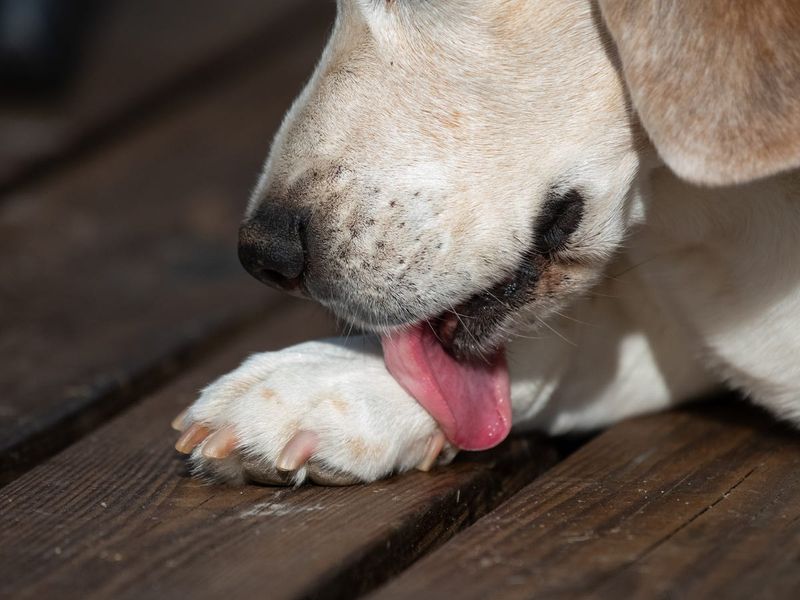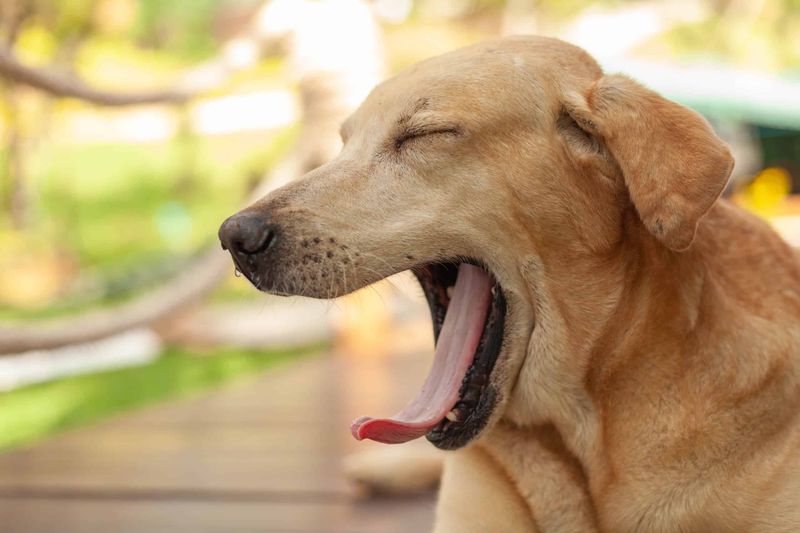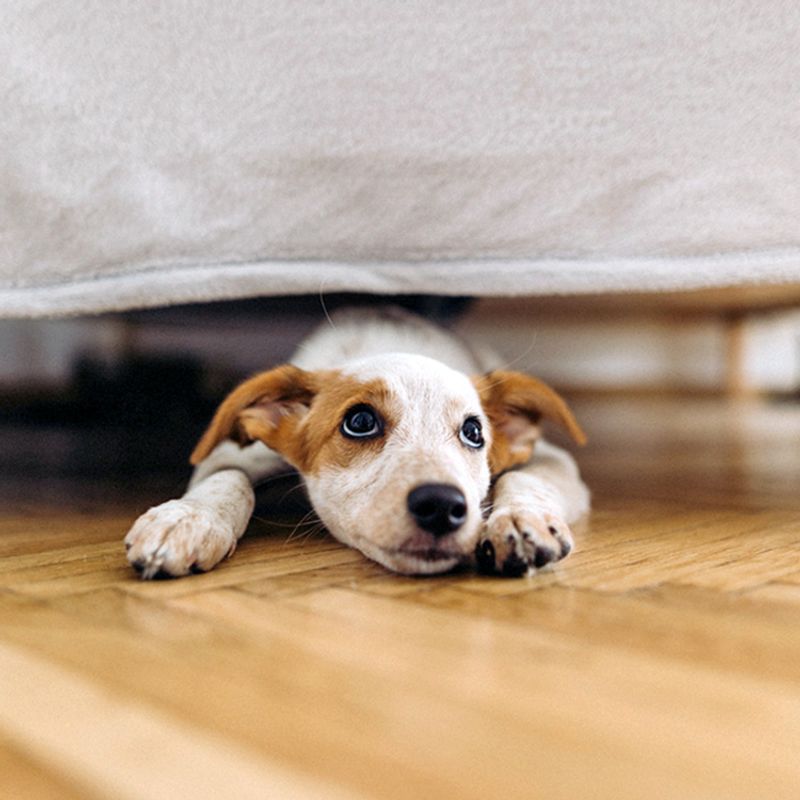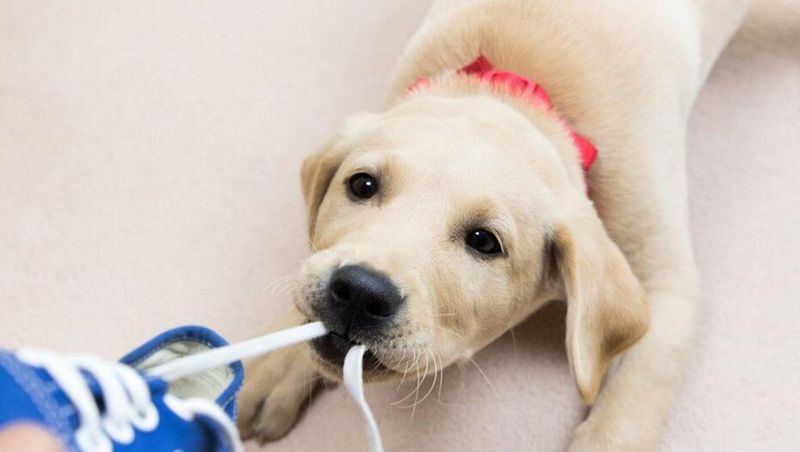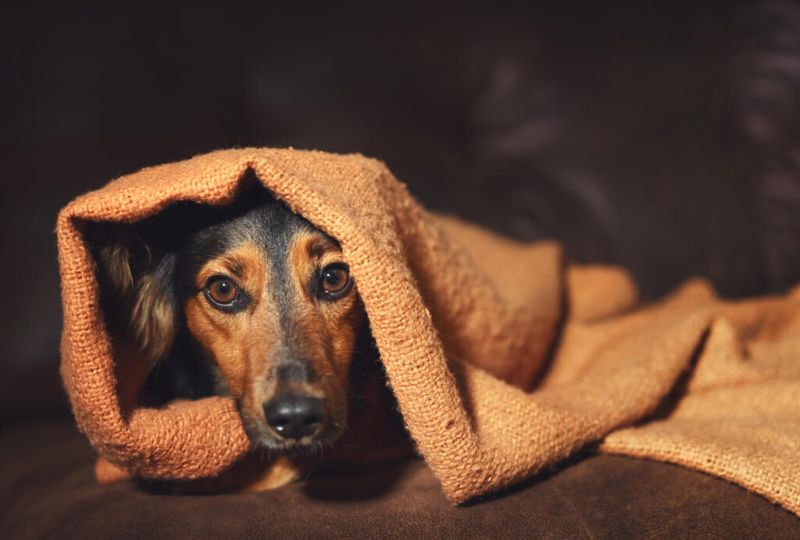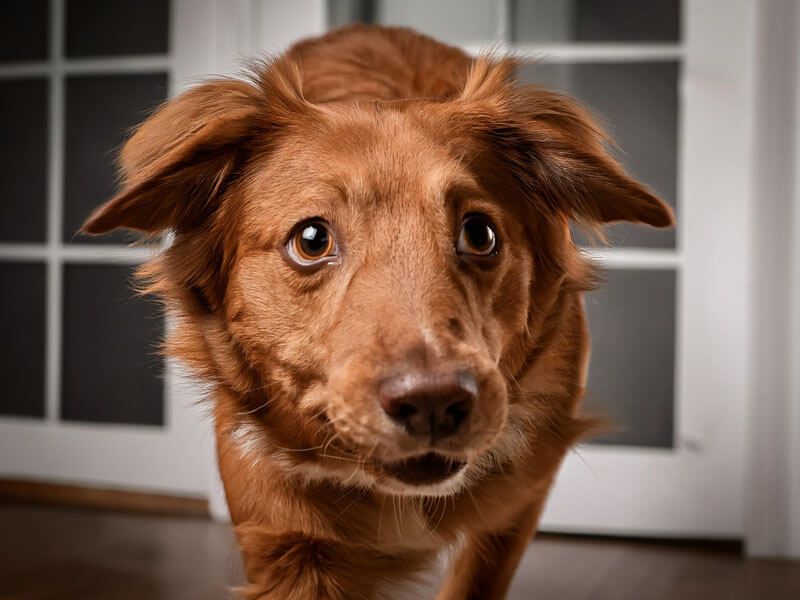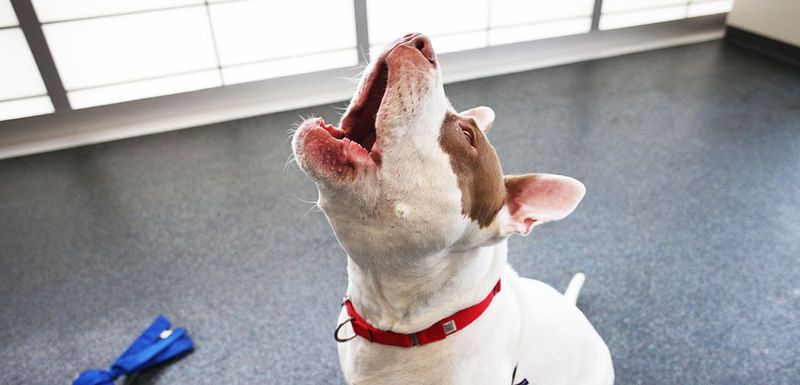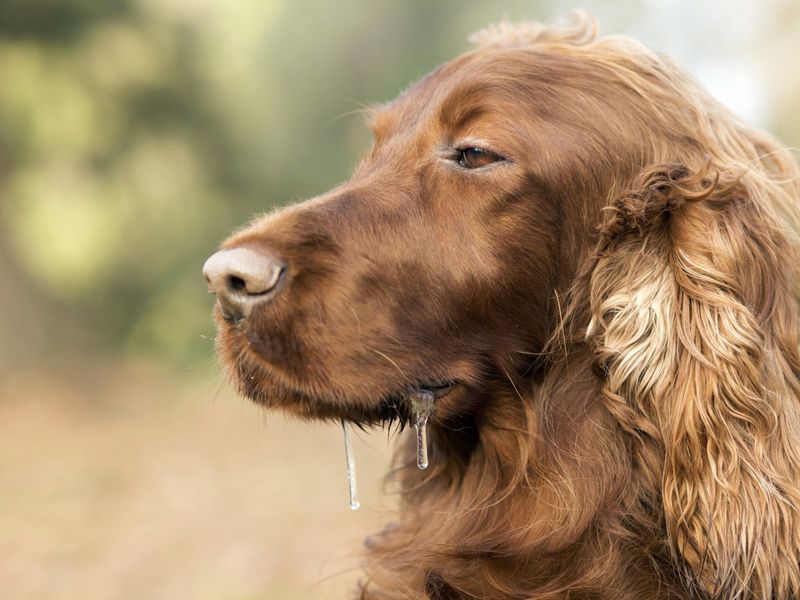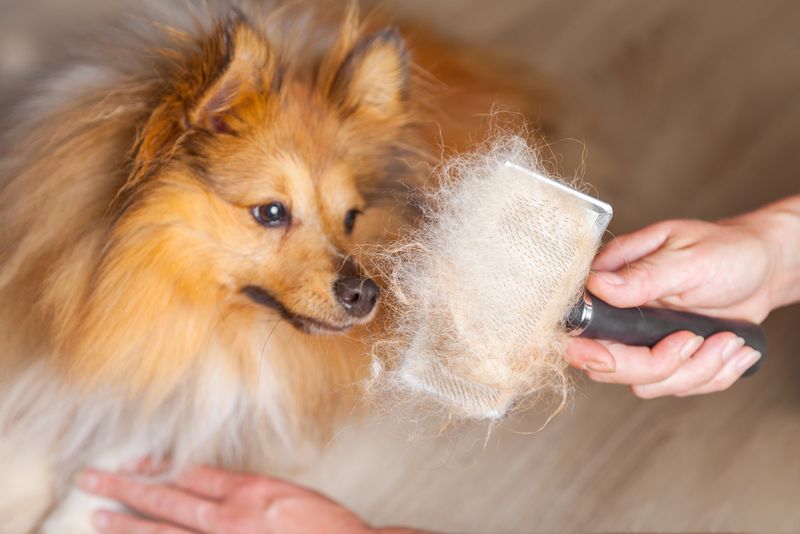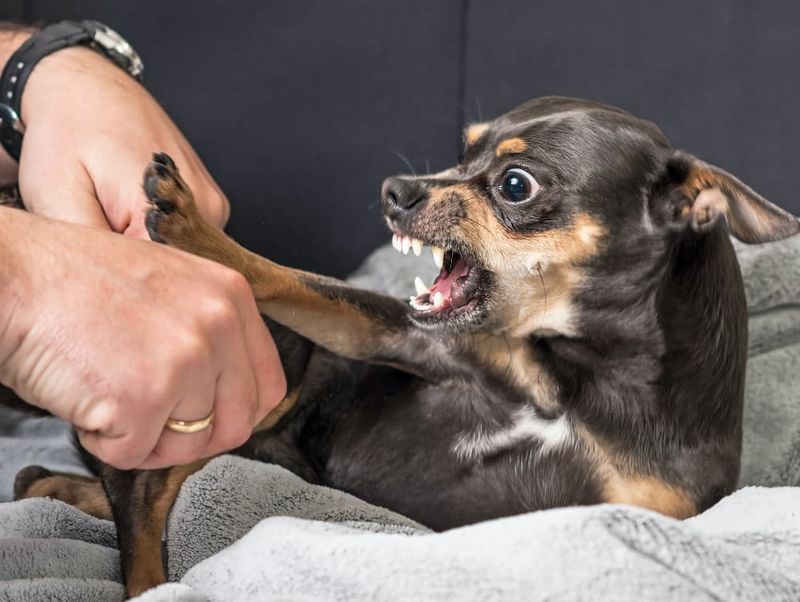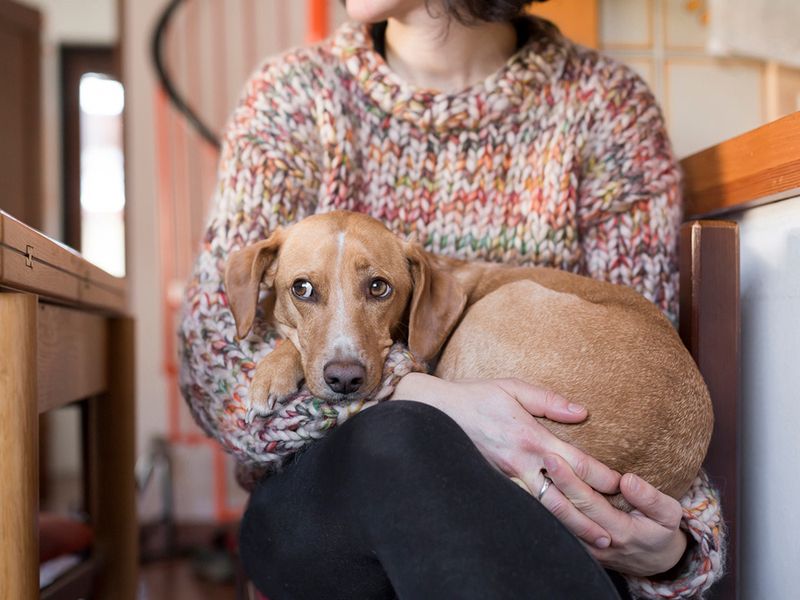Dogs, like humans, experience anxiety but often show it in subtle ways. Recognizing these silent signs is crucial for providing the comfort and care they need. Here are 12 signs your pup might be feeling anxious, and some gentle ways to help them find peace of mind.
Excessive Licking
Picture your dog licking their paws like it’s a new hobby. This could be a sign of anxiety. Dogs often lick excessively to soothe themselves. Imagine them curled up, licking away their worries.
To help, try gently redirecting their attention. Offer a chew toy or engage them in a playful activity. This diversion can help ease their anxiety.
Additionally, check for any physical irritants. Sometimes, a vet visit is necessary to rule out any underlying issues. Ensuring their environment is peaceful also plays a vital role.
Yawning More Than Usual
Ever seen your dog yawning like they’re perpetually bored? Turns out, yawning can be an anxiety signal. Dogs yawn to calm themselves, a bit like a deep breath for us.
To ease their stress, try engaging them in light exercise or a fun game. This distraction can help channel their nervous energy more positively.
Paying attention to their body language can provide clues to their anxiety triggers. Identifying and minimizing these can greatly reduce their discomfort.
Hiding or Seeking Solitude
Does your pup suddenly prefer hiding under the bed rather than playing fetch? This retreat might signal anxiety. Dogs often hide to feel safe from their perceived threats.
Try creating a safe space for them, complete with their favorite blanket and toys. This refuge can help them feel secure.
Spend time near them, offering gentle words and soft petting to reassure them of your presence. Your calm demeanor can ease their fears.
Destructive Chewing
If your shoes suddenly become a chew toy, it might be your dog’s anxious way of coping. Chewing releases stress-relieving endorphins, akin to humans biting nails.
Provide appropriate chew toys to satisfy this urge. Interactive toys can also engage their mind, reducing anxiety.
Ensure your belongings are out of reach and increase their physical activity. A well-exercised dog is often a calmer dog, reducing the temptation to chew destructively.
Panting When Not Hot
Have you noticed your dog panting like they’ve just finished a marathon, even when it’s cool? This could be anxiety talking. Panting is a dog’s way of trying to calm themselves.
Try creating a soothing atmosphere by lowering noise levels and dimming the lights. These small adjustments can help them relax.
If the panting persists, a comforting cuddle or gentle massage might do the trick. Always ensure they have access to fresh water and a cozy spot to unwind.
Pacing Restlessly
Does your dog pace like they’re tracing invisible lines? This restless movement often indicates anxiety. Pacing is a way for dogs to express their restlessness and unease.
To help, introduce calming activities such as gentle walks or training sessions. These can redirect their energy positively.
Providing mental stimulation through puzzle toys can also be beneficial. Keeping their mind occupied can help them focus less on their anxiety triggers.
Whining or Barking Excessively
Is your dog suddenly the loudest member of the household? Excessive vocalization is often an anxiety cry for help. They may be trying to communicate their distress.
Respond with patience, acknowledging their feelings. Offer soothing words and gentle petting to reassure them.
Redirect their attention with engaging activities or a favorite game. These distractions can help alleviate their anxious energy, leading to a quieter, more peaceful pup.
Loss of Appetite
When your food-loving dog suddenly turns away from their favorite meal, anxiety might be the culprit. Just like humans, dogs can lose their appetite when stressed.
Create a calm feeding environment, free from loud noises or disturbances. This tranquility can encourage them to eat.
If their appetite doesn’t return, consulting a vet can rule out any underlying health issues. Offering smaller, more frequent meals might also help ease their stress around eating.
Excessive Drooling
Drooling like they’ve just seen a juicy steak, even when they haven’t, can be a sign of anxiety. Stress can cause dogs to drool excessively.
Ensure they have a cool, comfortable space where they feel safe. This environment can help reduce their stress levels.
Gentle reassurance through soft words or a calming touch can also ease their discomfort. Always keep fresh water available, as drooling can lead to dehydration.
Shedding More Than Normal
Has your dog turned into a shedding machine? Stress can trigger excessive shedding, leaving fur all over your home.
Regular grooming can help manage the shedding and provide comfort. Brushing them can also be a bonding experience, reinforcing their sense of security.
Keeping their environment calm and predictable reduces anxiety triggers. A consistent routine can greatly benefit an anxious dog, minimizing their stress-induced shedding.
Aggression or Unusual Behavior
Does your sweet pup suddenly have a short fuse? Aggression can sometimes be an anxiety response. They might be feeling threatened or overwhelmed.
Approach them calmly, avoiding sudden movements or loud noises. Offering a quiet space where they can relax is beneficial.
Consulting a professional trainer or a vet can provide guidance and strategies for managing their anxiety-related aggression, helping restore their gentle nature.
Trembling or Shaking
Seeing your dog tremble like they’re cold, even when it’s warm, can be unsettling. Trembling is often a physical manifestation of anxiety.
Wrap them in a warm, comforting blanket, providing a sense of security. Your calm presence can also be reassuring.
Consider playing soft, calming music to create a serene atmosphere. This sensory comfort can help distract and soothe an anxious pup.

